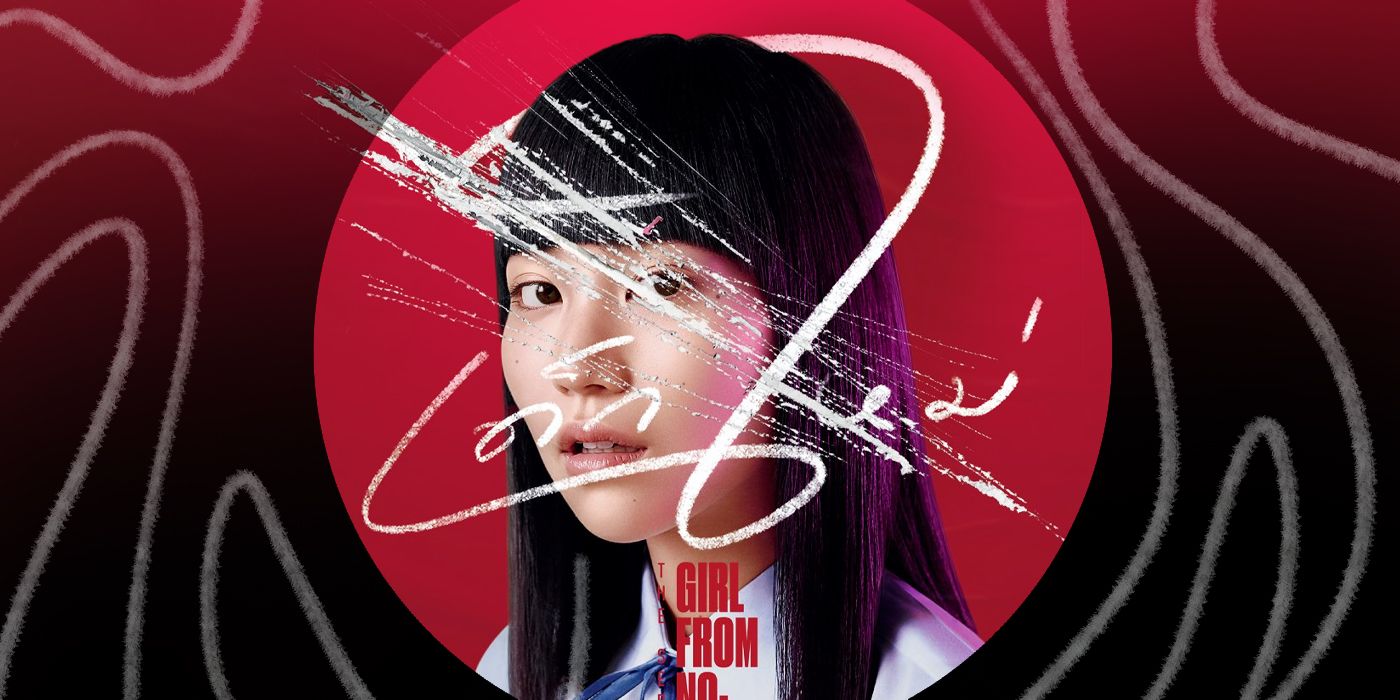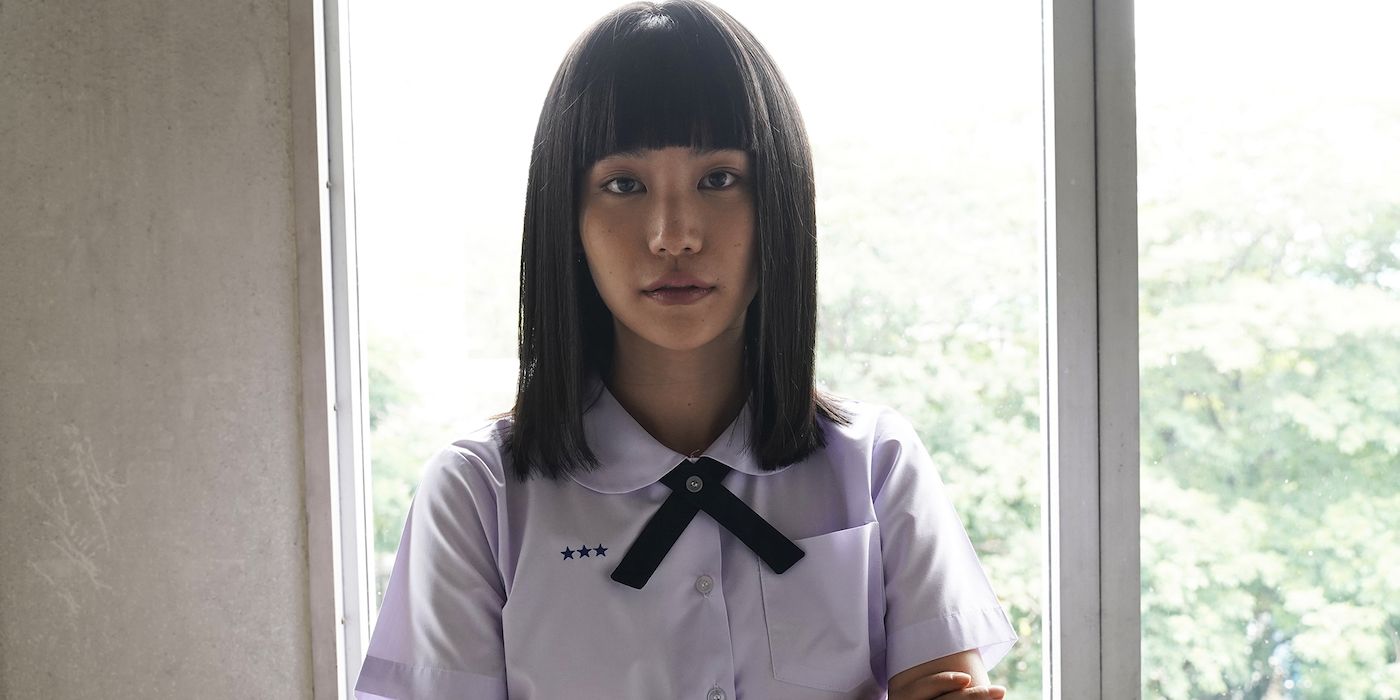One of Junji Ito’s most popular characters, Tomie, is also his most frequently adapted. With nine live-action horror films under her belt and a number of appearances in his anime adaptations, the allure of Tomie’s murderous beauty is unparalleled within Ito’s canon. The manga series follows the mysterious Tomie as she enters and permanently disrupts the lives of those she encounters. Her allure is palatable, and her presence alone drives these individuals, most often men, to madness that often results in incredibly violent fits of jealous, often murderous, rage. No matter how many times she is killed, she reanimates and spreads her curse by turning others into copies of herself. Like a dream, the femme fatale to end all femme fatales, Tomie appears and disappears, leaving destruction in her wake. No one knows where she comes from or the true origin of her powers, we only know the enigma that is Tomie.
Fans, however, haven’t truly gotten a Tomie adaptation that has managed to capture her uncanny ability to entangle herself in the lives of those she encounters. The vast majority of film adaptations that center around her either contain visuals that lean more into comic absurdity rather than abject horror or fail to capture the essence of Tomie’s manipulative prowess. While the dramatic detail of Ito’s artwork is notoriously difficult to bring to life, even in anime adaptations, the Thai thriller anthology Girl From Nowhere actually succeeds in what most of Ito’s adaptations do not: It manages to conjure up the menacing and, at times, strangely honorable nature of Tomie while maintaining a sense of unease throughout. Even though the show does not explicitly associate itself with Ito’s work, it strangely feels as though it centers Tomie in everything but its name.
What Is 'Girl From Nowhere' About?
Girl From Nowhere follows a mysterious young woman named Nanno (Chicha Amatayakul) who transfers to different schools and integrates herself into the lives of members in different cliques and faculty members. Upon her arrival, her beauty and mannerisms inevitably capture the interest of those around her. She has virtually no problem making all the boys fall for her and the girls hate her for it. Not only is she extremely clever, but she also tends to be very adept at mastering skills to annoy the overachievers around her. Even when it seems as though she’s backed into a corner, or brutally killed, Nanno is always one step ahead of those she sets her sights on. Once she gets her claws in the minds of her peers, she slowly begins to meticulously unravel the various levels of lies and deceit that lay seemingly dormant at the foundation of their relationships with one another. Sound familiar?
Nanno Is Tomie If She Was An Embodiment of Karma
As the events of each episode unfold, Nanno creates situations meant to instigate those she encounters to act in ways that reveal the darkness within themselves. From targeting predatory teachers to publicly humiliating an aspiring young artist with a penchant for plagiarizing, Nanno will do anything to bring the transgressions of those around her to light. While Tomie’s mere presence works to reveal how even the most seemingly, morally righteous person can be corrupted by feelings of intense desire, Nanno’s characterization uses similar critiques of uninhibited desire to bring forth a twisted form of justice. Like the characters within the show, the audience knows very little of where she comes from or the true extent of her powers as they are slowly revealed.
Though we do know she is definitely not human, we have no idea how old she is, how many different versions of Nanno are out there, or her motivations for purposefully wreaking havoc in these people’s lives. Some of her targets are undoubtedly monstrous, but others who are more morally gray often face punishments that don’t always fit the crime. It is incredibly clear that Ito’s Tomie has played a major part in influencing the show. Kitty Chicha has even stated that she studied the manga for the role, but the show’s knack for feeling like a more faithful adaptation of Ito’s brand of horror lies more in its execution than solely in the similarities between the main characters.
'Girl From Nowhere' Works Because It's Not a Direct Adapatation
From Nanno’s styling and mannerisms to the episodic format, Girl From Nowhere just oozes the spirit of Junji Ito’s work despite its lack of extreme gore. Like Tomie, Nanno rocks full bangs and a dainty beauty mark beneath her eye; however, the show’s success as an unofficial adaptation largely works because it is able to function without the pressure of attempting to bring Ito’s specific brand of body horror to life. In other words, the show ironically benefits hugely from not being explicitly associated with the enormous amount of expectations that come along with official adaptations of Junji Ito’s work.
Official adaptations of Ito’s catalog have always suffered from falling short when it comes to living up to audience expectations regarding bringing those terrifying black and white panels to screen. Either the pacing doesn’t work, the animation is too barren in comparison to the meticulous detail of the manga panels, or the excessively grotesque imagery does not translate as well to a live-action format either due to budget or technological limitations. Because it is not burdened with aesthetically living up to Ito’s masterful artwork, Girl From Nowhere is able to focus more explicitly on what makes a being like Tomie so utterly horrifying without getting too bogged down in living up to the iconic visuals associated with the legacy of the manga.
Without having to rely on recreating Ito’s visuals to be considered successful, the show is able to play to its own strengths regarding reproducing and emphasizing the mental warfare at the core of Tomie’s stories. In fact, many episodes, like Season 1’s “Apologies” and “Social Love'' would be right at home nestled between the pages of the manga. Despite its uncanny similarities to Tomie, Girl From Nowhere is just as much of its own thing as it is a clear homage to Ito’s well-renowned work. In fact, it just might be the best interpretation of the iconic manga put to screen.



